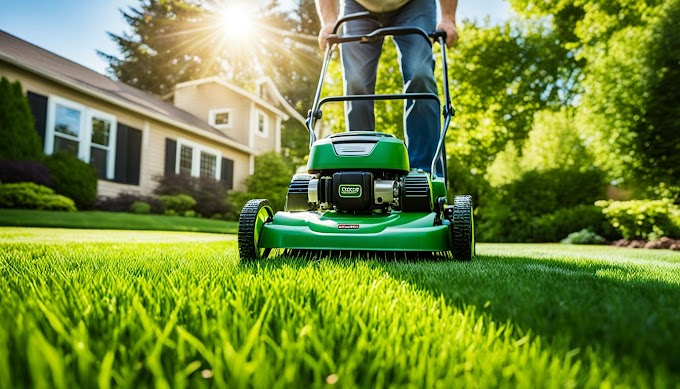5 Common Fungal Lawn Disease and How to Treat Them
Introduction
Have you ever stepped outside to see your once vibrant lawn suddenly marred by patchy brown spots covered in fuzzy, mold-like fungi? If so, you’re not alone! Lawn fungi can be an unwelcome sight for many homeowners and gardeners alike. These pesky organisms, while a natural part of your yard’s ecosystem, can wreak havoc on grass health if left untreated. In this article, we’ll explore what causes fungi to grow on grass, how to identify different types, and the various methods for treating and preventing outbreaks effectively.
Lawn Fungus: Identification, Treatment, and prevention
Understanding Lawn Fungi
What Causes Fungus on Grass?
Fungi thrive in specific conditions, making your lawn a prime target. Let’s look at some common contributing factors:
Humidity: Fungi love moisture. Rainfall and high humidity create perfect conditions for fungi to flourish.
- Poor Air Circulation: Overcrowded plants and packed grass may prevent airflow, fostering a damp environment conducive to fungal growth.
Mowing Height: Cutting grass too short can stress your lawn, making it vulnerable to fungal diseases.
Nutrient Imbalances: Over-fertilizing can lead to excess nitrogen, which often encourages fungal infections.
Understanding these contributing factors is essential for preventing future outbreaks.
Common Types of Lawn Fungus
Identifying the specific type of fungus infesting your lawn can help determine the best treatment plan:
Dollar Spot: Characterized by small, circular patches of dead grass, typically measuring 2-6 inches in diameter.
Brown Patch: Appears as large brown circles or irregular patches, usually caused by high humidity and warm temperatures.
Powdery Mildew: This white powdery substance often covers the blades of grass, indicating stress due to lack of sunlight and air circulation.
Fairy rings: This disease is caused by a fungus and causes light green rings to form in the grass or dead grass that takes on the shape of a horse's foot and turns brown.
Yellow Patch: The disease appears as brown or yellow patches on lawns that range in size from a few inches to several feet in diameter. The patches may have a distinct yellow border. Grass in affected areas may be stunted and appear thin or sparse. In severe cases, the patches become large, irregularly shaped areas of dead or dying grass. The roots and crowns of grass plants also become affected, leading to an overall decline in lawn health.
By recognizing these types, you can tailor your approach to treatment effectively.
Treatment Options
Cultural Control Practices
Before turning to chemicals, consider these natural and cultural practices that can help prevent and treat lawn fungi:
1.Adjust Mowing Height -- Keep your grass at the optimal height (usually 2.5 to 3.5 inches) to promote healthy growth and reduce stress.
Guide to The 10 most common Lawn Disease
- Aerate your lawn to alleviate compaction, allowing oxygen to penetrate the soil and water to drain better.
- Water in the early morning to allow grass to dry throughout the day and avoid creating a wet, humid environment.
Chemical Control Methods
If culturally-based solutions aren’t effective, you may consider chemical treatments. Always follow the instructions carefully to minimize environmental impact:
Fungicides -
- Target specific types of fungi. Choose a product that lists your particular problem on the label.
How to Identify, Find & Prevent Lawn Disease
- Certain soil fungicides can treat existing fungi, but preventative measures should still be your primary goal.
Organic Alternatives
- While many gardeners prefer organic solutions, these methods may take longer but can be effective:
Fungus On Grass: How to Treat it Properly
Prevention Strategies
Regular Maintenance
A well-maintained lawn is a less hospitable place for fungi to thrive. Here are some maintenance tips:
Fertilization: Balance nitrogen with phosphorus and potassium to promote overall grass health.
Fungidal Seeds: Some grass seeds are specially treated to resist fungal infections; consider these when overseeding.
Routine Aeration: Aerate your lawn at least once a year to enhance drainage and root health.
Observing Weather Conditions
Keeping an eye on the weather can help you take timely action:
If extended humidity or damp conditions are predicted, be proactive by adjusting your maintenance schedule.
5 Common Fungal Lawn Disease and How to Treat them
Conclusion
While lawn fungi can be a nuisance, understanding their causes, identifying types, and employing both treatment and prevention strategies can help restore your lawn's health. Regular maintenance and cultural practices are key components of a successful lawn care routine. Don’t let fungus take over your beautifully green grass; take action today and watch your lawn flourish once more.
Want to learn more about lawn care? Check out our other articles on getting rid of weeds and seed selection for a lush garden for more helpful insights.
Whether you’re sweeping away the excess moisture or adjusting your watering habits, these proactive steps will lead you toward a thriving garden. Happy gardening.






.jfif)

0 Comments